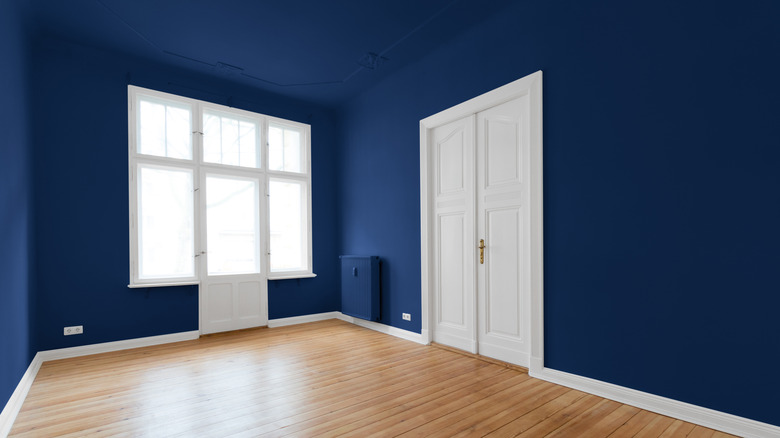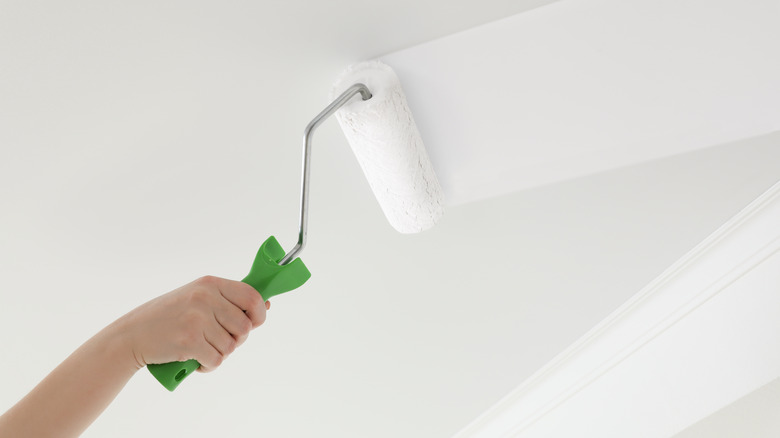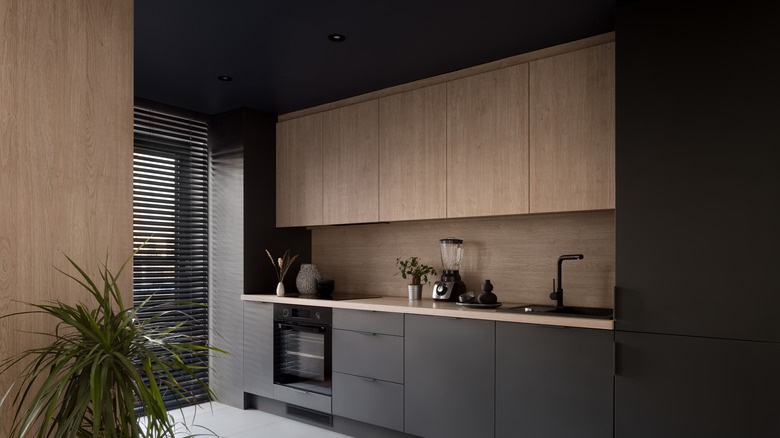Should You Paint Your Walls And Ceilings The Same Color?
Painting your walls and ceilings in the same hue can be an interesting design choice. When done right, it can add lots of visual interest and cohesion to a space. Unfortunately, it can bring down a room's feel and create an awkward vibe in the wrong situations.
So when's the best time to go for this unique look? If you have high or vaulted ceilings, painting them in the same shade as your walls can make the room feel cozier. As PaintRite Pros points out, a seamless color can also make a space feel bigger, especially when using an airy tone. Additionally, if you have decorative features like beams, sticking to one hue on the walls and ceiling can help these details stand out. This design trick can also be used when working within a budget since you only have to pay for one paint color.
However, this approach likely won't work well in smaller spaces without many windows to break up the effect. Painting both your walls and ceilings in an intense shade can create an overwhelming look. Also, using the same hue on both surfaces may make your space feel sterile if you opt for a neutral like white or grey.
What's the best paint choice for the ceiling?
While it's true that white is the standard for ceilings, not all white paint is created equal. First, keep in mind that white has undertones. According to Benjamin Moore, these can have either a warm effect or a cool look, depending on the formula. For example, orange and red undertones can make a room feel welcoming and play off walls in hues like tan and brown. On the other hand, white paints with blue and purple tones create a clean look that balances grey walls.
If you're not sold on white, you can still try making your walls and ceilings the same color, with a twist. Select your perfect wall color, then hop a few shades lighter or darker on the paint chip to achieve a similar look. For instance, if you selected a deep moss green for your walls, use the same color family to choose a lighter sage for your ceilings. This strategy also works with neutrals. If your walls are basic mid-range grey, paint your ceiling a charcoal shade that's slightly darker for a dramatic look.
When choosing ceiling paint, you must also consider what sheen to use. Home Depot suggests using flat finish paint since it's easy to clean and creates a matte finish that works in any space. However, if you want a subtle sheen, eggshell and satin can provide this while still hiding surface imperfections.
What are other great colors for painting ceilings?
Choosing your ceiling color presents an opportunity to make a statement. So, you can match your walls, play off their shade, or go an entirely different route. A bold color can draw the eye upward and use your ceilings to accent your space. To make this work, keep the room mainly neutral and coat your ceiling in an eye-catching shade of sunny yellow or vivid violet.
Black ceilings are another ideal way to add stunning drama to your home. This paint choice can make architectural details pop or add character to large spaces. Plus, as CertaPro Painters points out, exposed ceilings are trending. So what better way to create a sleek industrial look than with black-painted beams? This is an ideal option for finishing a basement and creating a cozy hangout space.
A popular way to create an airy vibe and mimic the great outdoors is to paint your ceilings a pretty blue. Select a powdery, sky-inspired hue to add a whimsical feel to a space. This can add a pop of color to otherwise neutral rooms and is perfect for anywhere from kids' rooms to your front entryway.


